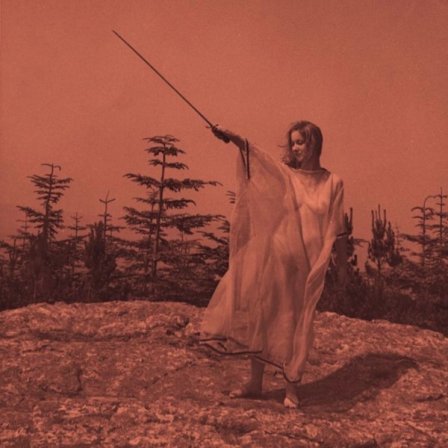“Constantly floating away…” — evaporation and dissipation are the main themes operating on II, the second album by Unknown Mortal Orchestra. They’re well-versed concepts in the psychedelic revivalist environment, a culture soaked in experimentation of the transcendental, in the domain of both the physical and the psychological. Yet there’s also a befuddled existentialist dancing in the background of this hazy dream, and the majority of the songs simultaneously link the two in a some vaguely passionate lucid dream, captured and re-imagined by Ruban Nielson, Jake Portrait, and Riley Geare. Despite the (usually) wired and processed sound of psych rock, the album has a polished and clean feel to it, and while the slickness of the recording puts one in a daze, it’s not a “beardy” pulling you a roached-out pouch from his hemp hoodie, but the clean-shaven aviator-sporting lawyer picking you up in his sports car.
II should not be passed over hastily: it’s clean, groovy, and snug. The first three tracks, particularly “So Good At Being In Trouble,” are catchy, radio-friendly, and well-written — the breathless hook on that same track is the most beautifully haunting melodic figure on the album. But in an album sense, these songs highlight how the rest of II drags on without intriguing experimentation. “Monki,” weighing in at over seven minutes, doesn’t develop after a lengthy guitar solo over a groove that found this listener’s interest wandering. “Dawn,” a minute-long synthesizer interlude, is an interesting idea, with potential to really break up and reinvigorate the second half of the album, but while the alternative instrumentation lends a refreshing quality, it doesn’t deliver a notable reprieve from the stock-standard guitar, bass, and drums. With a small spectrum of textures, timbres, and harmonic progressions, the music tends to slump, despite the physically energetic efforts of Nielson and his bandmates. There songs are dependent on hooks, but they’re either touched on in a light manner or repeated to excess.
And while there are a few choruses that instantly click into the aforementioned radio-gear and demand a sing-a-long, some of the songs suffer from a lack of solid direction. It’s cruisy music, which will suit some and irritate others. Tracks pad off into light guitar motifs with drum grooves clacking away in the distance or quickly fade-out at awkward places that push the listener away, disenchanted. Couple that with the overall squeaky-clean production and, due to conflict and elemental dissonance, the interest starts to wane, quickly losing shape and narrative tension. It can be tempting to give UMO a cop-out and label it as mood-music for a certain environment, but one just has to name a couple of contemporaries in the same field (Tame Impala, Connan Mockasin) to diminish the album’s fashionable quality.
As a listener inspired by their first album, I was looking for more of an adventurous spirit in this sequel. Nielson tries somewhat by channeling luminaries like Led Zeppelin and Cream, but the instilled character is slightly hazy, just like his dreams, his dissolution of self. It’s funny, for all this talk of “I’m so lonely,” “I wish I could swim and sleep like a shark,” I, I, I, we don’t get a sense of our protagonist’s persona being projected at us or explored on a more sophisticated level. And this perhaps says something about the album itself: II, in its ultimately so-so form, proves slightly disappointing after the joyous romp of Unknown Mortal Orchestra, and while it still has a few standout moments that grab the listener and spark a mood, it’s only occasionally eventful and, ultimately, doesn’t reach the heights of its predecessor.
More about: Unknown Mortal Orchestra




